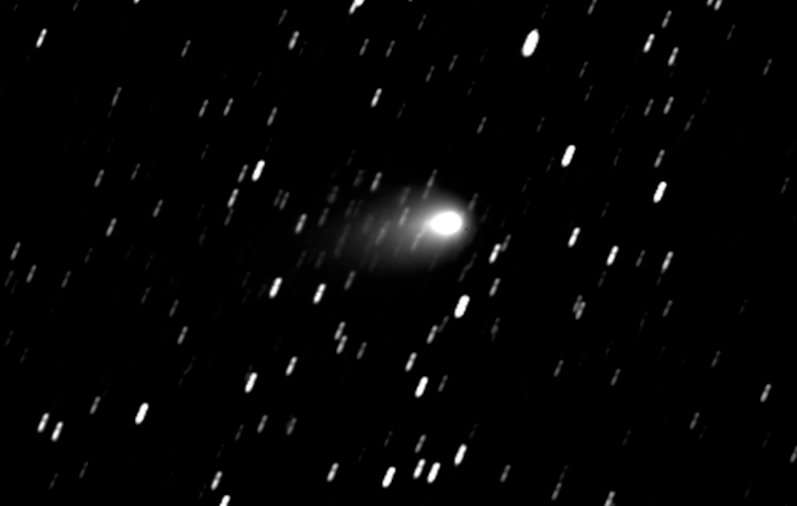Astrophysicists study the 'profile' of coma in Comet 21P/Giacobini-Zinner

Far Eastern Federal University (FEFU) scientists, together with astrophysicists from all over the world, are observing as the Comet 21P/Giacobini-Zinner approaches the Earth. The favorable weather conditions in September in Primorsky Krai, Russia, made it possible to receive the quality images of the object. The scientists are currently preparing an article for publication.
Observation work was conducted by lead scientist Evgenij Zubko, Ph.D.. The team consists of Alexey Matkin, Ekaterina Chornaya and Anton Kochergin, and Maxim Zheltobryukhov and Gennady Kornienko, researchers at the Ussuriysk Astrophysical Observatory.
The researchers have noted that the study of comets provides an opportunity to obtain new information on microphysical properties of cometary dust. The study of the smallest, submicron- and micron-sized dust particles plays a key role in the whole research process. The results can reveal the history of the formation and development of the solar system.
"The uniqueness of the situation is that the phase angle for our observation of this particular comet was as high as 80 degrees. In other words, we had been looking at the comet in its profile. This angle made it possible to measure very precisely the distance for which the cometary dust particles were ejected towards the sun; the so-called stand-off distance. Thus, with a very accurate measurement of the coma extension toward the sun, we can calculate with high accuracy the velocity of the dust-particle ejection and the effect of the solar radiation pressure on deceleration of motion. Now, we are analyzing these data," said Evgenij Zubko.
"One of our results is a highly detailed image of the comet, obtained by combining 20 frames taken consecutively. There are also tracks of the stars in the picture—their stretched images. This results from the fact that the comet was moving against the background of static stars, while the telescope was following the comet, not the stars," explained graduate student Ekaterina Chornaya.
Provided by Far Eastern Federal University




















